Exploring Bateman’s, Burwash and Bodiam Castle en-route
This is such a delightful East Sussex road trip to embark upon, and you’ll even be dipping your toes into the county of Kent and, if you’re brave, the English Channel. Once you’ve explored the smuggling town of Rye and visited Lamb House, the home of Henry James, you’ll be ready to discover the beautiful countryside beyond.
I would advise allowing a couple of days to enjoy the full extent of this Rye road trip, as there are so many charming places to see and visit. You’ll be weaving through dappled country lanes and visiting the picturesque, moated castle at Bodiam and Bateman’s, the exquisite family home of Rudyard Kipling.
This circular East Sussex mini-road trip is around 55 miles (88km). It’s an incredibly easy route to explore, especially in an EV. You’ll discover some idyllic country towns and villages and breathtaking historical sites..
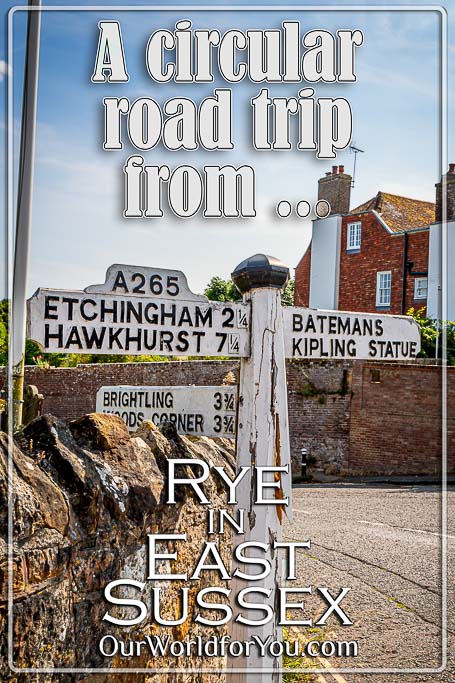

Our Rye Loop Road Trip Destinations
We'll explore the enchanting historic town of Rye and Rye Harbour, the sleepy hilltop town of Winchelsea, and visiting the National Trust sights of Bodiam Castle and Bateman’s. You’ll also get to explore the charming towns of Burwash, Robertsbridge, and Hawkhurst.
You can click on the link to jump to the section, and to return, just click on the section title.
We chose a circular route around this charming region of East Sussex and Kent, starting and ending in Rye. The historic town of Rye can be accessed from the M20 (jct. 10A), about 20 miles (32km) along the A2070 and the A259. As mentioned, the road trip’s entire loop is around 55 miles (88km).
Okay, so let’s jump in our trusty steed and hit the road.
Stay informed

Allow plenty of time to visit Rye, as there are so many nooks and crannies to uncover and so many historical sights to see.
When visiting a location, we often use the Historic England website, which highlights the locally listed buildings and their fascinating backgrounds. Ensure you visit Lamb House in West Street; this National Trust site was the former home of Henry James and E. F. Benson. It was also the filming location of Mapp and Lucia.

Rye is a lovely town to stroll around of an evening, so it’s a perfect location to base yourself for this mini Rye road trip. There are attractive cobbled lanes to wend your way through and some quaint pubs and restaurants to while away an evening.
On leaving Rye, briefly jump back onto the A259 towards Winchelsea; however, we’re not heading to Winchelsea quite yet. We’re turning left onto Harbour Road and visiting Rye Harbour, a tiny quayside village along the River Rother
Where to stay in Rye
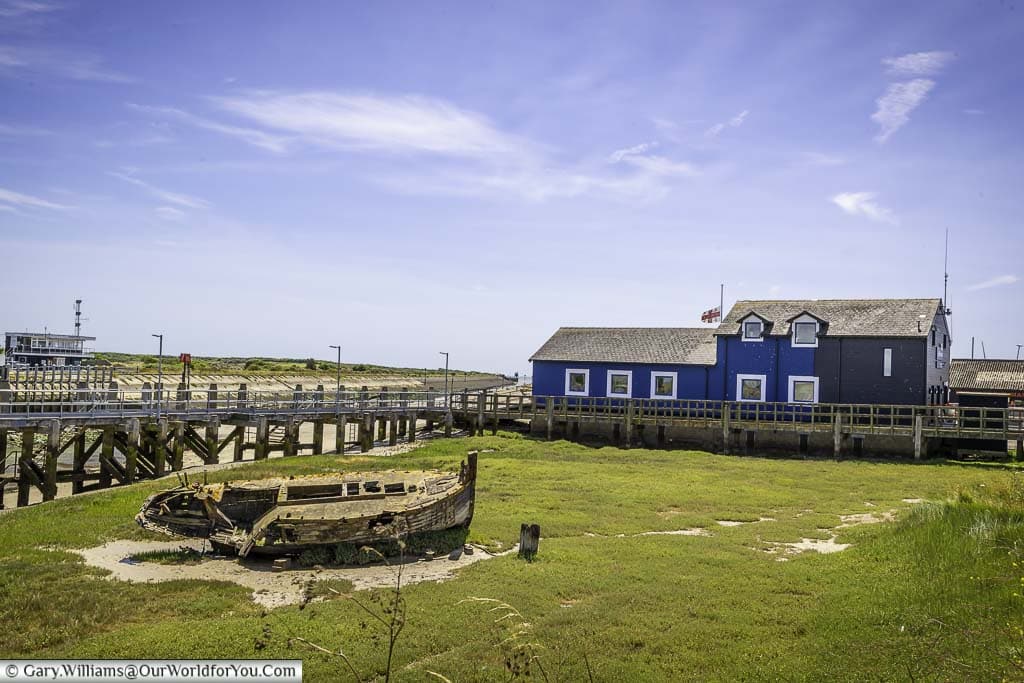
Rye Harbour is extremely quaint and dates from the early 19th century; you feel like you’ve discovered a little oasis. As you meander towards the Admiralty Jetty, you’ll pass by some delightful fisherman’s cottages and Rye Harbour RNLI station.
There’s a lovely pub along here named William the Conqueror, which serves delicious Greek food.
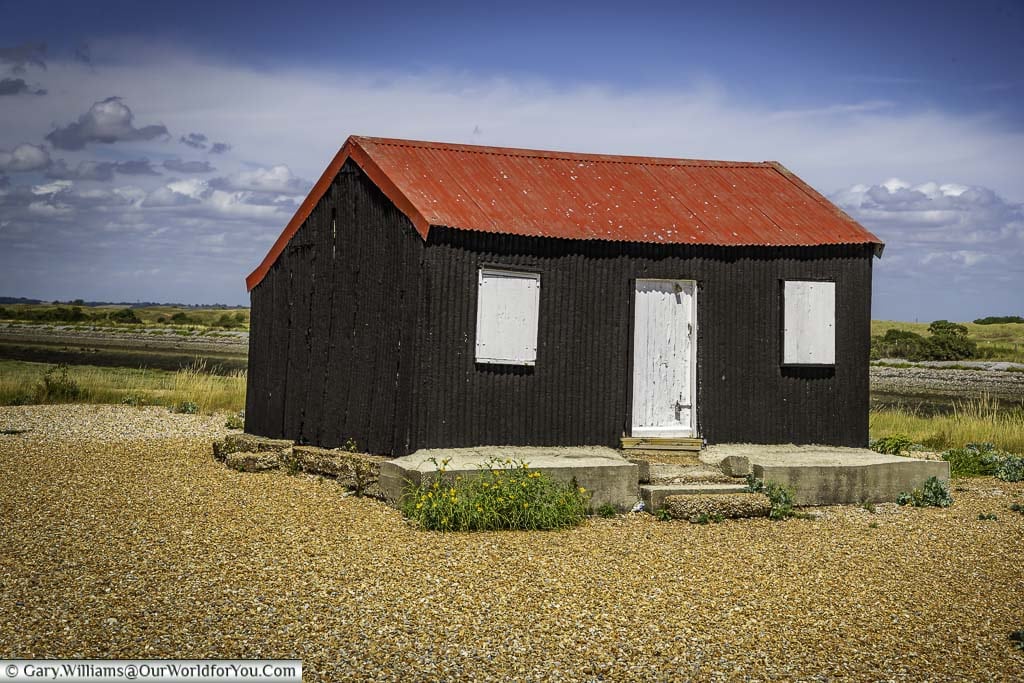
Once you’ve had a spot of lunch then take a stroll through the Nature Reserve and the Rye Harbour Discovery Centre, which opened in 2021. Within the reserve, there are more than 300 rare or endangered species to look out for.
Jumping back in the car, we head back onto the A259, and we’re now off to visit the attractive hilltop village of Winchelsea, which is only a few miles away and then onto Winchelsea Beach

Many years ago, Winchelsea was never located on a hilltop. The original Old Winchelsea was in a low-lying area of the shingle coastline and was slowly engulfed by the sea. The Great Storm in 1287 washed away many buildings, and Old Winchelsea became an island.
An unusual aspect of Winchelsea is that the narrow roads and lanes were created on a grid structure, and many of the ancient cottages have wine cellars. During the 1300s, Winchelsea garnered a prosperous wine trade with France.

Winchelsea is full of so much character and three of the original town gates can still be seen.
During the 12th century, Winchelsea and Rye became a Cinque Port Ancient Town. Members of the Cinque Ports Confederation were responsible for providing ships and men to meet the naval requirements of the English Crown.
There are five Head Ports, Dover, Hastings, Hythe, New Romney and Sandwich, two Ancient Towns, Rye, and Winchelsea and seven Limbs.

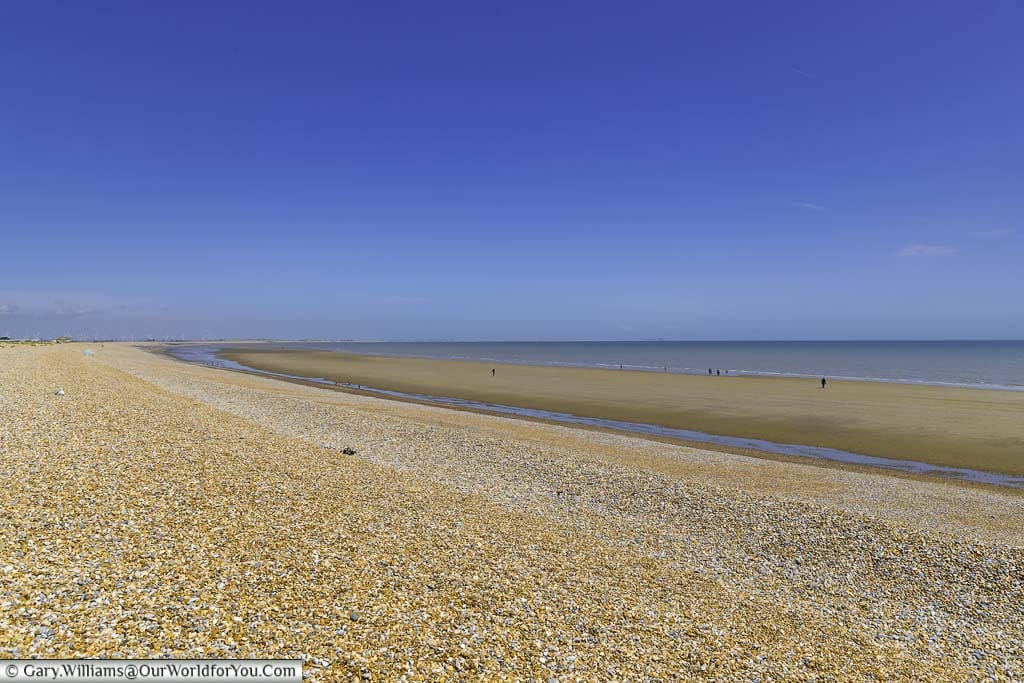
Hopping back in your car let’s head to the seaside village of Winchelsea Beach. Rejoining the A259, briefly journey east and head along Sea Road. In no time at all, after about 1.5 miles, you’ll arrive at Winchelsea Beach.
Winchelsea Beach is a tiny village, and its seaside location is its attraction. Although the beach is mainly pebbly, when the tide is low, a sandy beach is revealed. The views across the English Channel are incredible. If you’re feeling brave, then dip your toes into the chilly sea.

Retrace your steps along Sea Road, passing through Rye and pick up the B2089 northwest and pass through the villages of Cock Marling and Broad Oak. When you come to the junction at Cripps Corner, turn right onto the B2165 towards Bodiam and follow this road north.
You’ll wend your way through the attractive village of Staplecross, and just before arriving at Bodiam Castle, you’ll pass over the level crossing of the heritage Kent & East Sussex Railway. This historic train is magnificent. Jump aboard, and you’ll be nostalgically escorted to the historic town of Tenterden.
If you're intrigued by Sussex's fascinating past and weird and wonderful history around the county, then take a peek at "The A-Z of Curious Sussex".
You won't be able to put it down, you can pick it up for your Kindle or in good old paperback.
Yay, we’ve arrived at Bodiam Castle. This magnificent, ruined castle is an absolute treat to explore. Armed with our National Trust membership cards, we are ready for our venture.
The captivating medieval castle at Bodiam is on the East Sussex and Kent borders and transports you to a fairy-tale world of knights in shining armour. You can imagine bountiful feasts laid out at lavish banquets and jesters entertaining the noble gentry.


The castle is now restored ruins, and within the sturdy, impenetrable stone walls, you can clearly see the layout of the rooms within. The interior quadrangle of Bodiam Castle may now be a shadow of its former self; however, Bodiam Castle can still convey how its grandeur once was. Its Great Hall, kitchens, and household apartments would have been built around the majestic central courtyard against the thick stone curtain walls.
Ensure you climb to the top of the tower at Bodiam Castle and catch the beautiful view across the East Sussex countryside.

Inspired into creating your own adventure?
The planning starts hereYour perfect accommodation
Need a car?
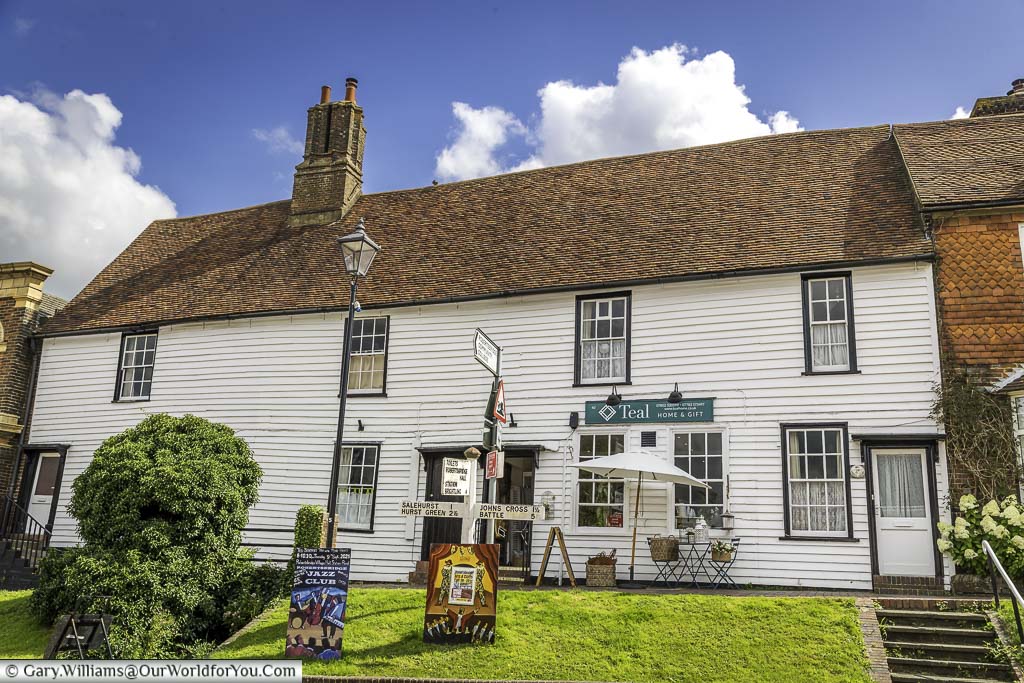
Robertsbridge is believed to date from around 1176, when a Cistercian Abbey was founded in the village. Unfortunately, in 1538, the abbey succumbed to the Dissolution of the Monasteries during Henry VIII's reign.
As you meander around the charming lanes and alleyways, you’ll spot many picturesque timber-framed cottages and white weatherboarded homes throughout the historic centre of Robertsbridge.
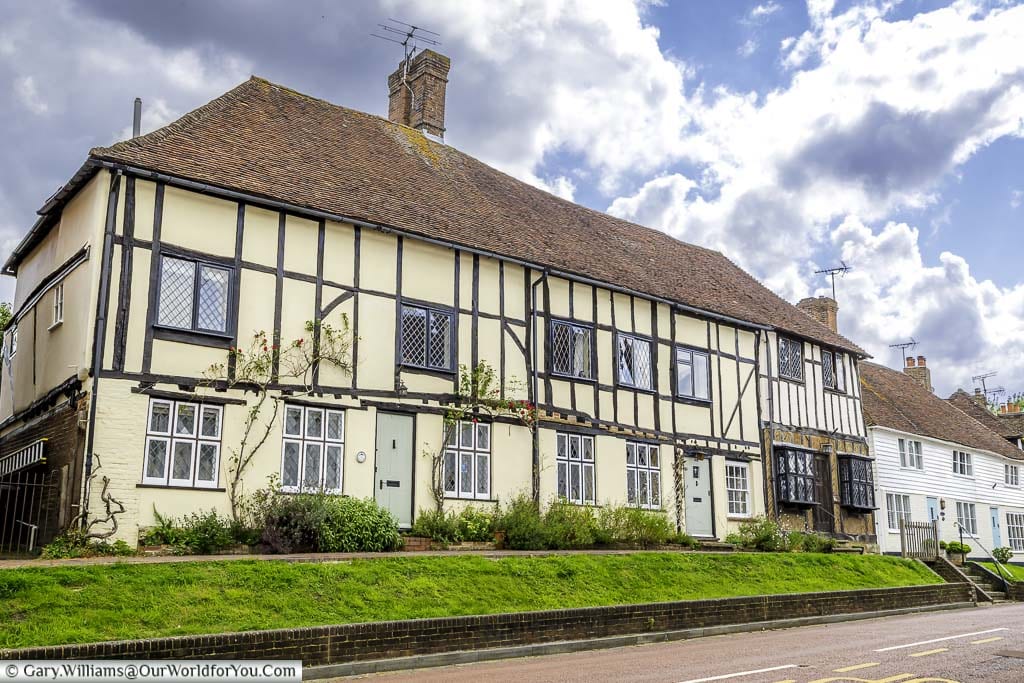
When ambling around Robertsbridge, you really get the sense that village life is at the heart of this delightful place. You’ll find welcoming cafés, florists, and, of course, the essential pub.
Upon leaving Robertsbridge, head west along Brightling Road past the train station. At Oxley’s Green, turn right towards Bateman’s, which is quite a narrow road. Then, left onto Fontridge Lane and right onto Kings Hill Road. Now follow the signs to Bateman’s.
Escape for a few days
Are you in search of a tranquil hideaway to relax and unwind in, while you discover the beautiful British countryside?
Browse through the handpicked properties and unique retreats at Holiday Cottages.
We’ve now arrived at Bateman’s, the enchanting family home of Rudyard Kipling, which is now managed by the National Trust.
Bateman’s is in an idyllic part of the Sussex countryside, surrounded by woodlands and wildflower meadows; it feels like you’ve stepped into a captivating landscape painting.

The Jacobean Wealden manor house was originally built for a Sussex ironmaster in 1634. However, after the demise of the iron industry, Bateman’s was used as a farmhouse and gradually deteriorated until Rudyard Kipling and his wife fell in love with it in 1902.
With a generous amount of TLC, Bateman’s and its stunning gardens were transformed into the welcoming family home you see today.

The National Trust has recreated Kipling’s study to look as if Rudyard had just stepped out for a brief moment.
Lofty bookcases filled with fascinating novels to be thumbed through, a well-used typewriter with so many tales to tell and a globe tempting you to explore far-flung places around the world.
We have created a little YouTube video of Bateman’s; why not take a look?
Also, why not subscribe to our YouTube channel and get the latest clips as we post them?
Our next stop is just 1 mile north of Bateman’s, to the picturesque town of Burwash.
After a cultural visit to Bateman’s, we take a stroll around the delightful village of Burwash.
Burwash in the High Weald is located along the A265. Just 9 miles southeast of Burwash lies Battle, the historic home of Battle Abbey, where the Battle of Hastings took place in 1066.
The ancient village of Burwash can trace its history back to Norman times, when William the Conqueror was on the throne. Later, during the reign of Henry III in 1252, Burwash was given the authority to hold a weekly market, which allowed trading in Burwash to flourish.
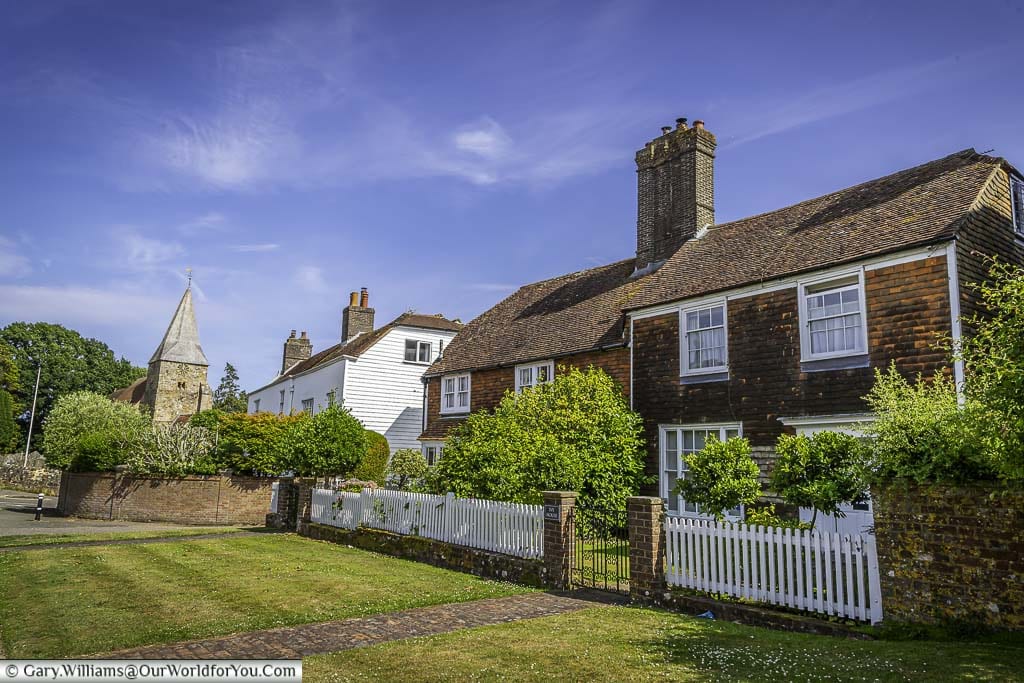
Today, the tree-lined High Street of Burwash is full of charming red-brick cottages and white-weatherboarded homes and shops. It’s a lovely place to stroll around and ensure you catch up with Rudyard Kipling sitting on the town bench.
Burwash and surrounding villages were involved in the Wealden Iron Industry. Kipling’s home, Bateman’s, was built by an ironmaster in 1634.
During the 18th and 19th centuries, Burwash became infamous with the local smuggling gangs that scoured the region from Rye to Hawkhurst. However, it wasn’t just the smugglers who caused infamy in this quaint village; the main road through Burwash was notorious with highwaymen.
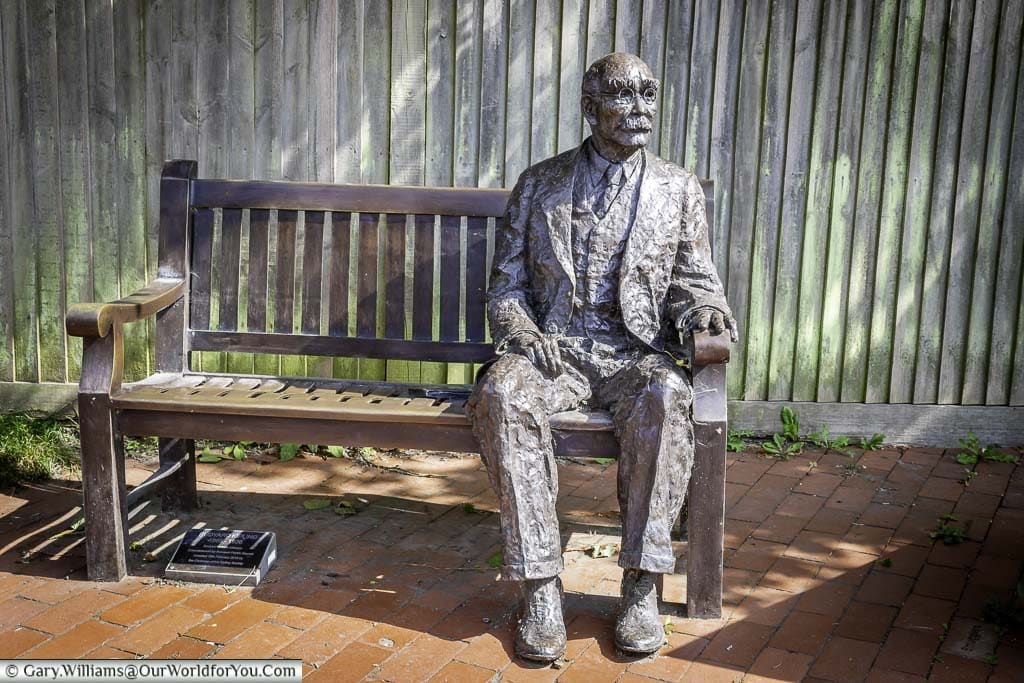
We’re now briefly popping into the county of Kent to visit Hawkhurst, which is within the High Weald Area of Outstanding Natural Beauty.
On reaching Hawkhurst from the south, you first arrive at ‘The Moor’. This tranquil area of Hawkhurst is a pleasure to stroll around.
Surrounding the large triangular village green are a small cluster of quaint cottages, a welcoming village pub and the Church of St Lawrence, believed to date from around 1100.
Jumping back in the car, we head slightly north to the larger village of Hawkhurst, known as ‘Highgate’.

Hawkhurst has over 1,000 years of recorded history and appeared within the Domesday Book in 1096. Along with Burwash, Hawkhurst lies within the area of the Weald, which was once synonymous with the iron industry, and has been produced since Roman times.
Along with the production of iron, this region of Kent was also renowned during the 14th century for hop-growing and weaving cloth. Edward III encouraged Flemish weavers to move to England, and with the resources required to support the trade, Kent was perfect for this.
Modern-day Hawkhurst is a charming place to explore. It has a lovely colonnade with independent stores dotted through. You’ll also find a couple of local pubs in Hawkhurst, a delightful little cinema.
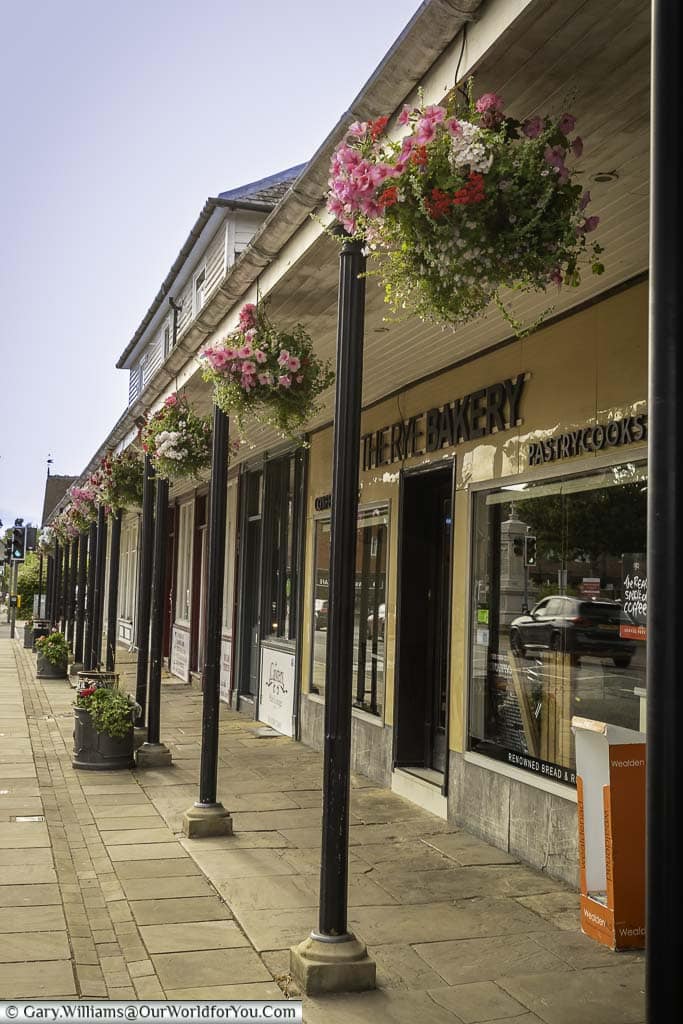
Of course, we need to mention the Hawkhurst Gang, who were notorious in Kent and Sussex between 1735 and 1749 for their smuggling and often brutality. However, after the demise of the wool and iron industries, they were welcomed by the poor.
Their gang leader, Arthur Gray, was captured, tried at the Old Bailey and executed in 1748. Follow the Hawkhurst Gang Smugglers Trail through the southeast to uncover more tales from these ne’re-do-wells.
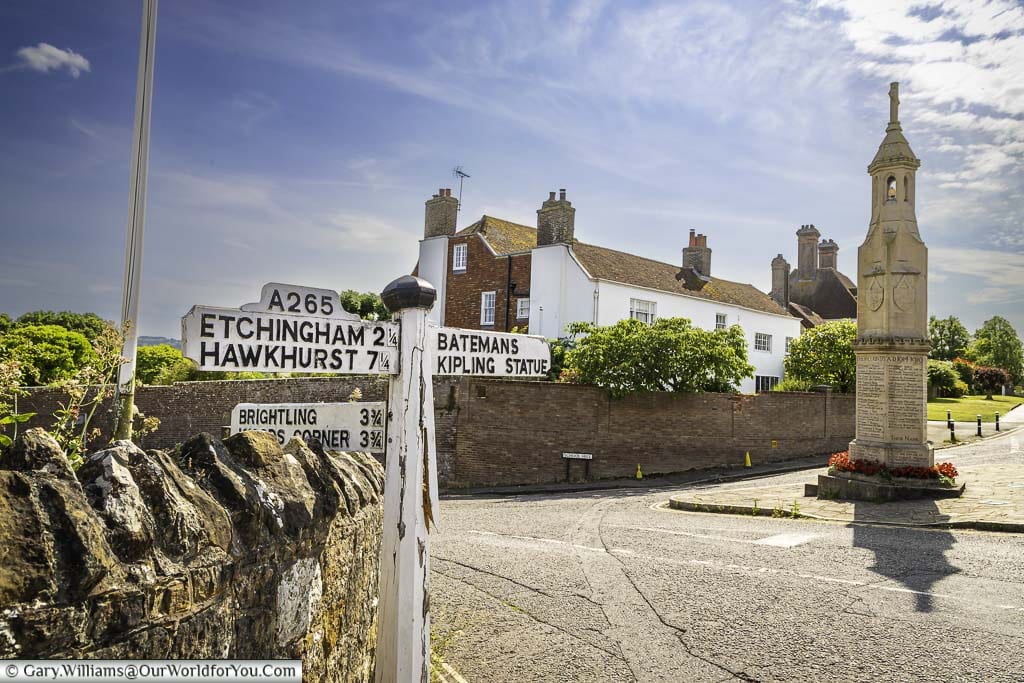
To complete this road trip back to Rye, turn right onto the A268 (Rye Road), heading through the villages of Sandhurst and Newenden. Continue towards Rye and cross the River Rother back into Sussex.
Heading over the level crossing of the Kent & East Sussex Railway in Northiam, continue along the A268 through Four Oaks, Peasmarsh, Playden, and finally onto Rye.
We hope you had fun on your Rye loop road trip. Please leave a comment below to let us know how you enjoyed your adventures.
* This post may contain links to affiliated sites where we earn a small commission at no additional charge to you.


A Lovely county is Sussex, East and West
Yes, it’s a beautiful county and pretty large, even when it’s split in two. We haven’t visited so much of West Sussex; however, our list of locations is continually growing.